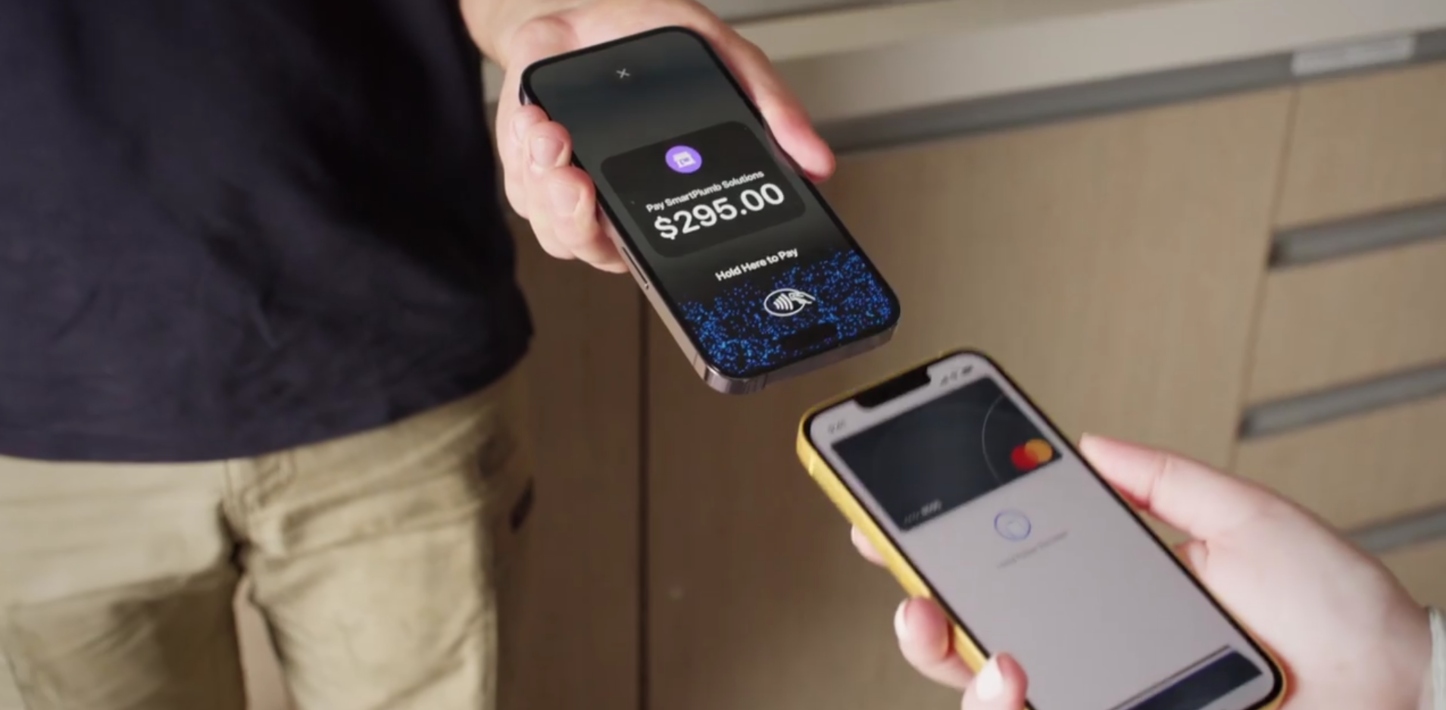
Adam Rogers, owner of A&B Musical Instruments. Source: Supplied.
Australian small businesses can now accept payments directly through their iPhone, promising greater mobility to traders while upheaving the highly competitive point-of-sale (POS) market.
Apple officially introduced Tap to Pay on iPhone into the Australian market Wednesday, allowing businesses to accept contactless credit and debit card payments, and digital wallet payments, with nothing more than their iPhone and a supporting iOS app.
Beyond contactless payments through NFC technology, the system will also allow PIN entry.
The development is slated to provide more flexibility than traditional countertop POS terminals, without the add-on hardware associated with existing portable POS innovators like Square.
Westpac and Tyro are the first two Australian companies to allow their customers to utilise the technology, with Apple claiming ANZ Worldline Payment Solutions, Stripe, Till Payments, and Zeller will offer the option to clients in the months ahead.
“This new capability is particularly beneficial for any business that takes payments on the road or needs its staff to be more mobile on the shop floor,” said Chris de Bruin, Westpac chief executive of consumer and business banking.
“It’s a game changer for tradies, delivery drivers, businesses like hairdressers, mechanics or florists, and many more.”
The service is available through supporting iOS apps on the iPhone Xs and newer devices, running iOS version 16.4 or later.

beTyro’s iPhone payment system. Source: Tyro
“Trust factor” and fees potential barriers to adoption
Even though customers are well acquainted with paying from their phones, some operators fear it will take consumers time to adjust to a business’ POS operating from an iPhone.
Adam Rogers, the owner of Geelong’s A&B Musical Instruments, said customers may have “trust issues” when presented with an iPhone for the first time.
“I think there’s a trust factor there,” Rogers told SmartCompany. “How do you authenticate that as the company’s phone? It could just be a random person’s phone.”
And while providers have hailed the portability of the new system, even on the shop floor itself, Rogers said existing his business’ existing POS systems can be taken on the road.
“I reckon in a market situation, or a farmers’ market situation, it might be fantastic, but I think certainly for me, it’s not something that I would rush to do,” he said.
Usage fees may also pose a hurdle.
Notwithstanding monthly fees, Westpac charges a flat 1.2% transaction fee for purchases made through its POS systems.
That rises to 1.4% for Westpac’s iPhone system, a figure Rogers said could put some small and medium businesses off while “margins are eroding and inflation is crazy”.
Additionally, some small business advocates hope the new wave of mobile payment acceptance systems facilitate least-cost routing, allowing merchants to choose cheaper processing methods than the ones initially offered by their financial service providers.
Although the Reserve Bank of Australia has levelled its expectation that mobile wallets facilitate least-cost routing, retail groups are still wary of being locked into pricey transaction processing regimes.
“Payment fees have become a significant financial burden for small businesses, so as innovative solutions continue to emerge, it’s crucial that we implement regulations that promote minimum cost and merchant choice,” said Ben Kearney, CEO of the Australian Lottery and Newsagents Association.
Tap to pay challenges existing POS solutions
Tap to Pay on iPhone is not the first time Australian businesses have been allowed to accept payments through their phone, as players like Square and Stripe launching Android payment acceptance in April.
However, Apple devices comprise roughly half of Australia’s mobile phone market, making the introduction of Tap to Pay on iPhone a significant development.
The rise of phone payment acceptance options poses interesting questions for firms like Square, which helped pioneer mobile POS systems in the local market, but have now diversified their business offerings to extend beyond POS systems alone.
The firm already offers Tap to Pay on iPhone in the United States but was not included in the first tranche of companies expected to offer the system domestically over the coming months.
Speaking to SmartCompany last month, Marco Lamantia, head of industry relations and operations at Square in Australia, said the company is “excited” by the prospect but stopped short of confirming its own Apple-powered payment option.
“We’re always looking for ways to lower the barriers to accept payments for our sellers,” he said.
Handpicked for you

Australian Made Week 2023 kicks off as research shows a third of Aussies willing to pay 10% more for local products



COMMENTS
SmartCompany is committed to hosting lively discussions. Help us keep the conversation useful, interesting and welcoming. We aim to publish comments quickly in the interest of promoting robust conversation, but we’re a small team and we deploy filters to protect against legal risk. Occasionally your comment may be held up while it is being reviewed, but we’re working as fast as we can to keep the conversation rolling.
The SmartCompany comment section is members-only content. Please subscribe to leave a comment.
The SmartCompany comment section is members-only content. Please login to leave a comment.